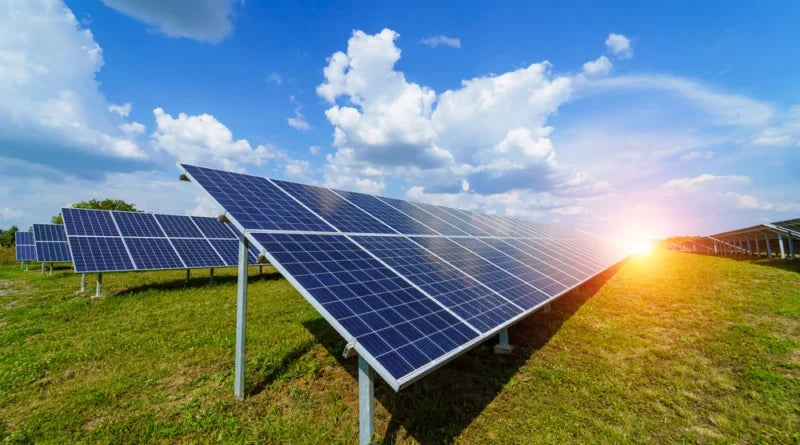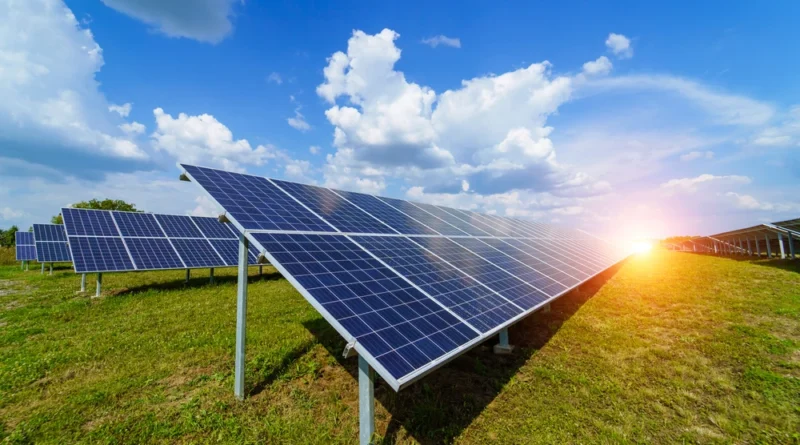
Solar power is a beacon of sustainability and innovation in the ever-evolving renewable energy landscape. The miracle of solar cells lies at the heart of harnessing sunlight and converting it into electricity. This comprehensive article delves into the complex world of solar cell design and operation and examines the technologies driving our transition to a cleaner, greener energy future.
What is a solar cell?
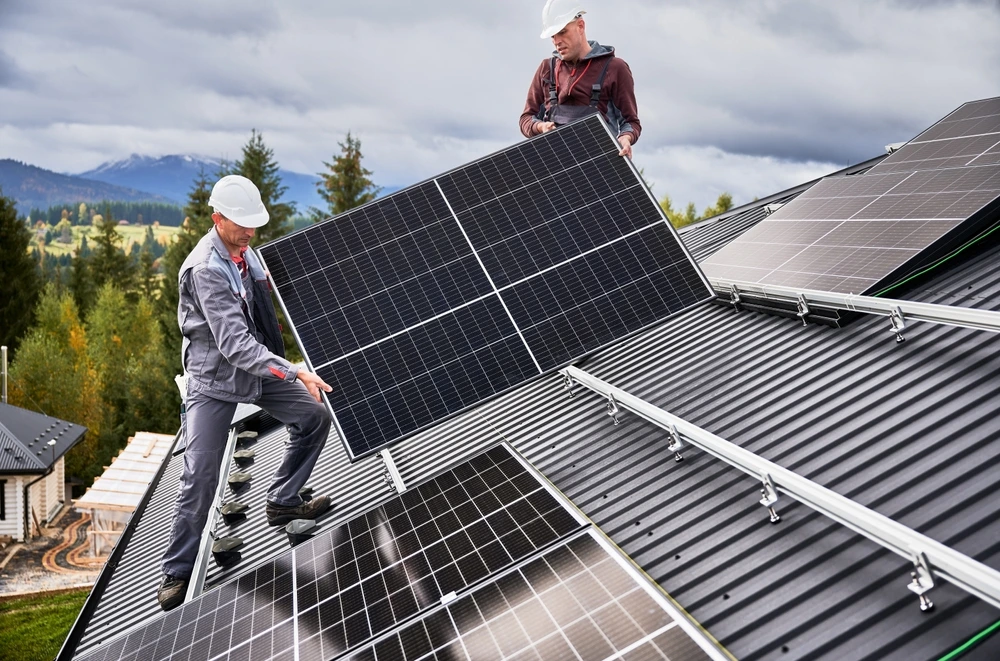
A solar cell, also called a photovoltaic cell, is a device that converts sunlight into electricity through the photovoltaic effect. These cells are made primarily of semiconductors and use photon energy to generate electrical current.
Types of solar cells
Solar cells offer a wide range of variants adapted to respective needs, from monocrystalline to thin film and tandem technology.
Crystalline silicon solar cells
Crystalline silicon solar cells, the most common type, come in monocrystalline and polycrystalline. While monocrystalline cells have higher efficiency due to their uniform structure, polycrystalline cells offer cost advantages.
Thin Film Solar Cells
Thin-film solar cells use lightweight, flexible materials such as amorphous silicon or cadmium telluride. These cells are ideal for unconventional applications and are known for their cost-benefit ratio.
Tandem solar cells
Tandem solar cells consist of multiple layers of semiconductors with different band gaps, optimizing the absorption of sunlight over a broader spectrum. This technology increases efficiency and is therefore a promising approach for future solar cell development.
The basic principles of solar cell construction
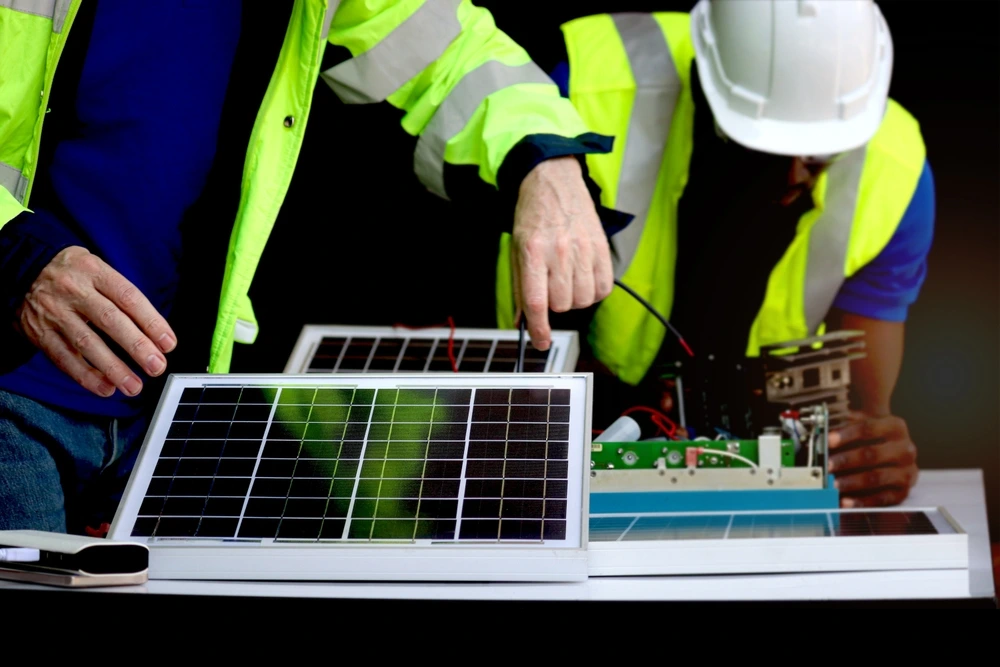
The structure of solar cells is based on semiconductors, usually silicon, which form a p-n junction for electron separation. Strategic metal contacts dissipate the energy generated, with additional coatings optimizing efficiency.
Photovoltaic cells: the building blocks
Solar cells or photovoltaic cells are the basic units that convert sunlight into electricity. These cells are made mainly of semiconductors and use the photovoltaic effect to generate electrical energy when exposed to sunlight. The most important components include:
- Semiconductor materials: Silicon is the most commonly used semiconductor material, particularly in crystalline form or as a thin film. It has the ability to release electrons when hit by photons.
- PN intersection: Solar cells have a pn junction where positive (p-type) and negative (n-type) semiconductors meet. This transition facilitates the flow of electrons and creates an electric field.
- Metallic contacts: Electrical contacts are essential to absorb the electricity generated. Metal contacts at the top and bottom of the cell allow current to be drawn.
Layers and coatings: increase efficiency
To optimize the performance of solar cells, additional layers and coatings are incorporated:
- Anti-reflective coating: This coating is applied to minimize light reflection, improves light absorption and therefore increases the efficiency of solar cells.
- Back Surface Field (BSF): The BSF layer prevents the recombination of electrons and holes, further improving the overall efficiency of the solar cell.
How solar cells work
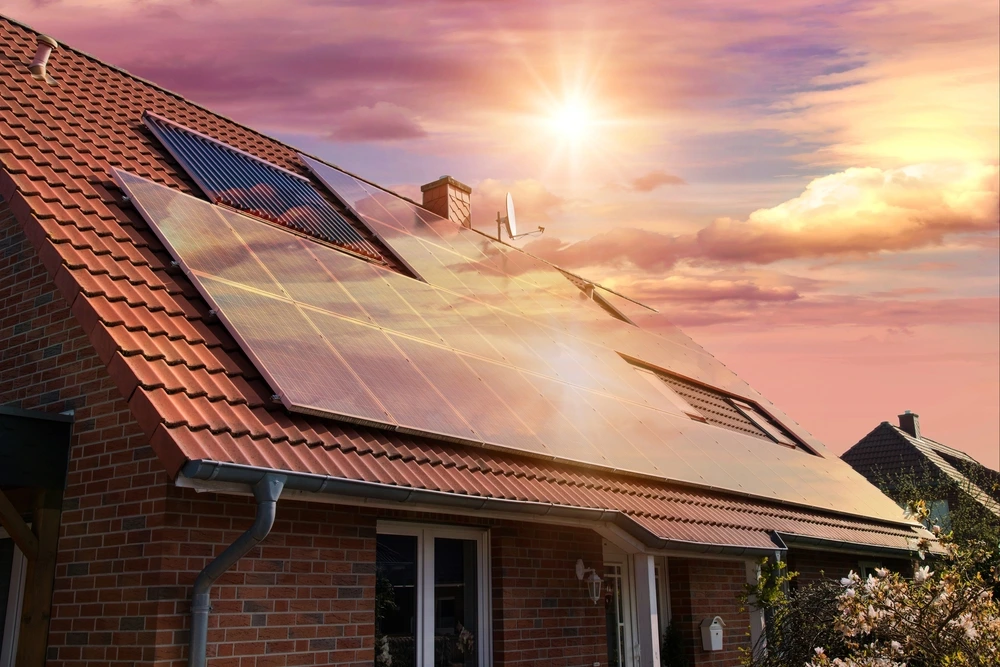
Understanding how solar cells convert sunlight into electricity requires a step-by-step process:
- Photon absorption: When sunlight hits the solar cell, photons are absorbed by the semiconductor material, providing energy to the electrons.
- Generation of electron-hole pairs: The absorbed energy leads to the release of electron-hole pairs within the semiconductor material.
- Generation of an electric field: The p-n junction facilitates the separation of electrons and holes and creates an electric field that drives electrons towards the metal contacts.
- Current flow: The movement of electrons through metal contacts creates an electrical current that can be used for various applications.
Use of solar energy generation systems
Solar energy generation systems are used in several areas:
- Residential solar panels: Provide electricity to families and reduce dependence on the conventional electrical grid.
- Commercial and Industrial Facilities: Provide sustainable energy solutions to companies to reduce their carbon footprint.
- Space exploration: Powering satellites and spacecraft with solar panels for longer missions.
Advantages of solar cells
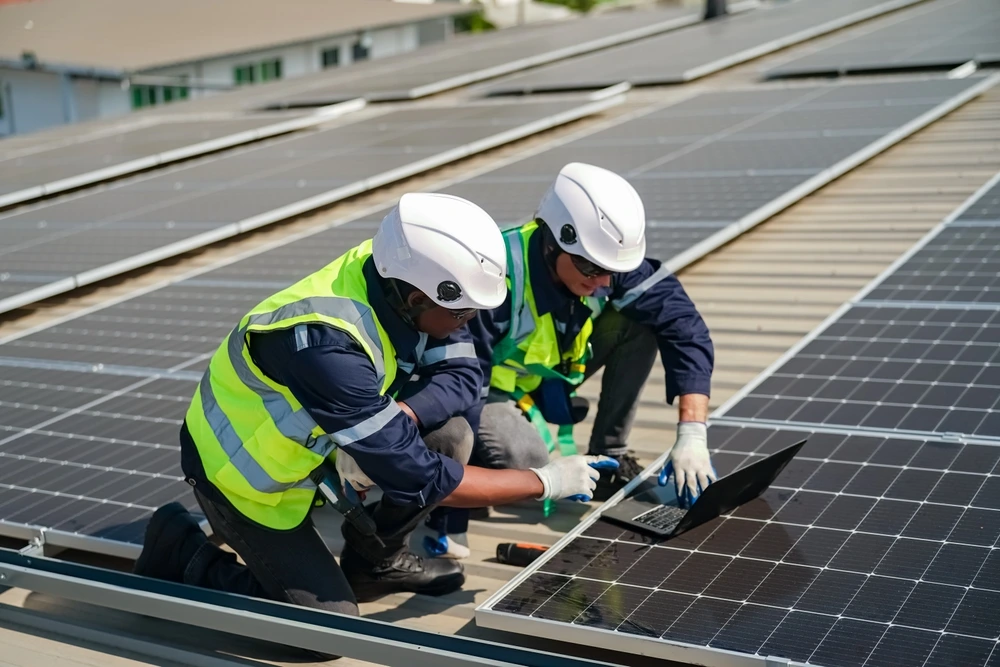
- Renewable energy source: Solar energy is an abundant and renewable resource that guarantees a long-term sustainable energy solution.
- Environmentally friendly: Generating electricity through solar energy produces minimal greenhouse gases and the environment becomes cleaner.
- Low operating costs: Once installed, solar systems have relatively low operating and maintenance costs.
Disadvantages of solar cells
- Intermittent power production: Solar power generation depends on sunlight and is therefore irregular and unreliable at night or on cloudy days.
- High acquisition costs: The initial costs of installing solar systems can be high, but they gradually decrease as technology advances and government incentives emerge.
- Environmental impact of production: Due to certain materials, the production and disposal of solar cells can have an impact on the environment and require responsible recycling measures.
Conclusion
As the world increasingly turns to sustainable energy solutions, the design, types and applications of solar cells are a testament to human ingenuity. From traditional crystalline silicon cells to cutting-edge tandem solar technologies, solar cell development continues to drive advancements in renewable energy. Acceptance and understanding of these innovations will undoubtedly play a critical role in shaping the future of our energy landscape.
Common questions
How efficiently do solar cells convert sunlight into electricity?
The efficiency of solar cells varies depending on the type and technology. Crystalline silicon cells, commonly used in residential and commercial installations, typically have an efficiency of 15 to 22%. Although thin-film solar cells are less efficient, they are more economical and suitable for certain applications. Continuous research and development aims to improve efficiency of all types, contributing to the overall efficiency of solar energy systems.
Can solar cells generate excess energy and store it for later use?
Yes, solar panels can generate excess energy, especially during peak solar radiation hours when energy production exceeds immediate needs. This excess energy can be stored in batteries or fed back into the grid. Energy storage solutions, such as lithium-ion batteries, allow users to utilize solar energy even in low sunlight or at night, increasing the reliability and autonomy of solar energy systems.
What influence do environmental factors have on the performance of solar cells?
Environmental factors such as temperature, shade and pollution can affect the performance of solar cells. Higher temperatures can reduce efficiency, and shading even a small portion of a solar panel can significantly reduce energy production. Regular cleaning and maintenance mitigate the effects of environmental factors and ensure optimal performance and longevity of your solar energy system. Furthermore, ongoing research focuses on developing solar technologies that are resilient to diverse environmental conditions.

